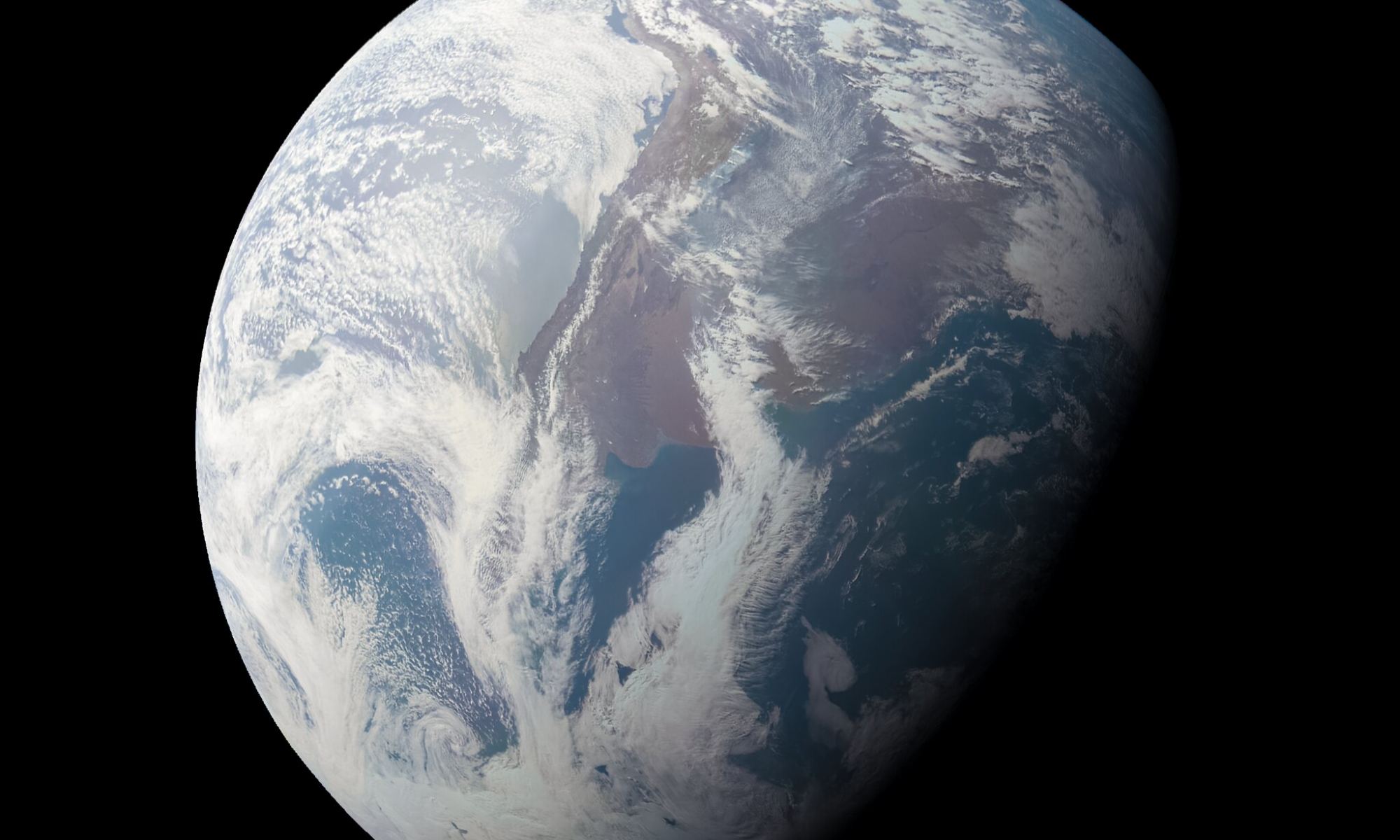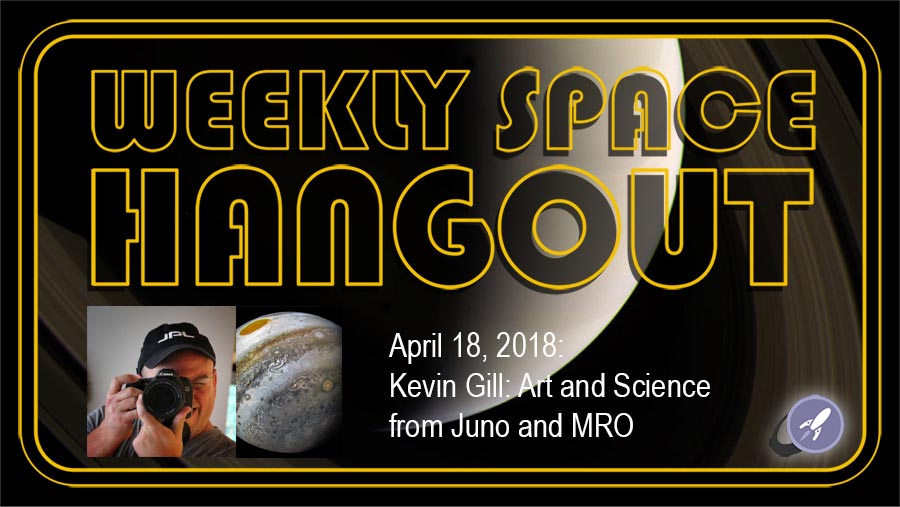Since the Juno spacecraft has been in orbit around Jupiter for nearly five years — since July 4, 2016 — you may have forgotten about that time back in 2013 Juno flew past Earth. The spacecraft needed a little extra boost to reach Jupiter, so it used Earth for a gravity assist. Image editor Kevin Gill reminded us of that flyby with some stunning newly processed images of Earth, taken by the JunoCam, the “citizen science” camera on board. Pale blue dot indeed!
Continue reading “Juno Captured This Image of Earth on its Way Out to Jupiter Back in 2013”With its New Extension, Juno is Going to be Visiting Jupiter’s Moons
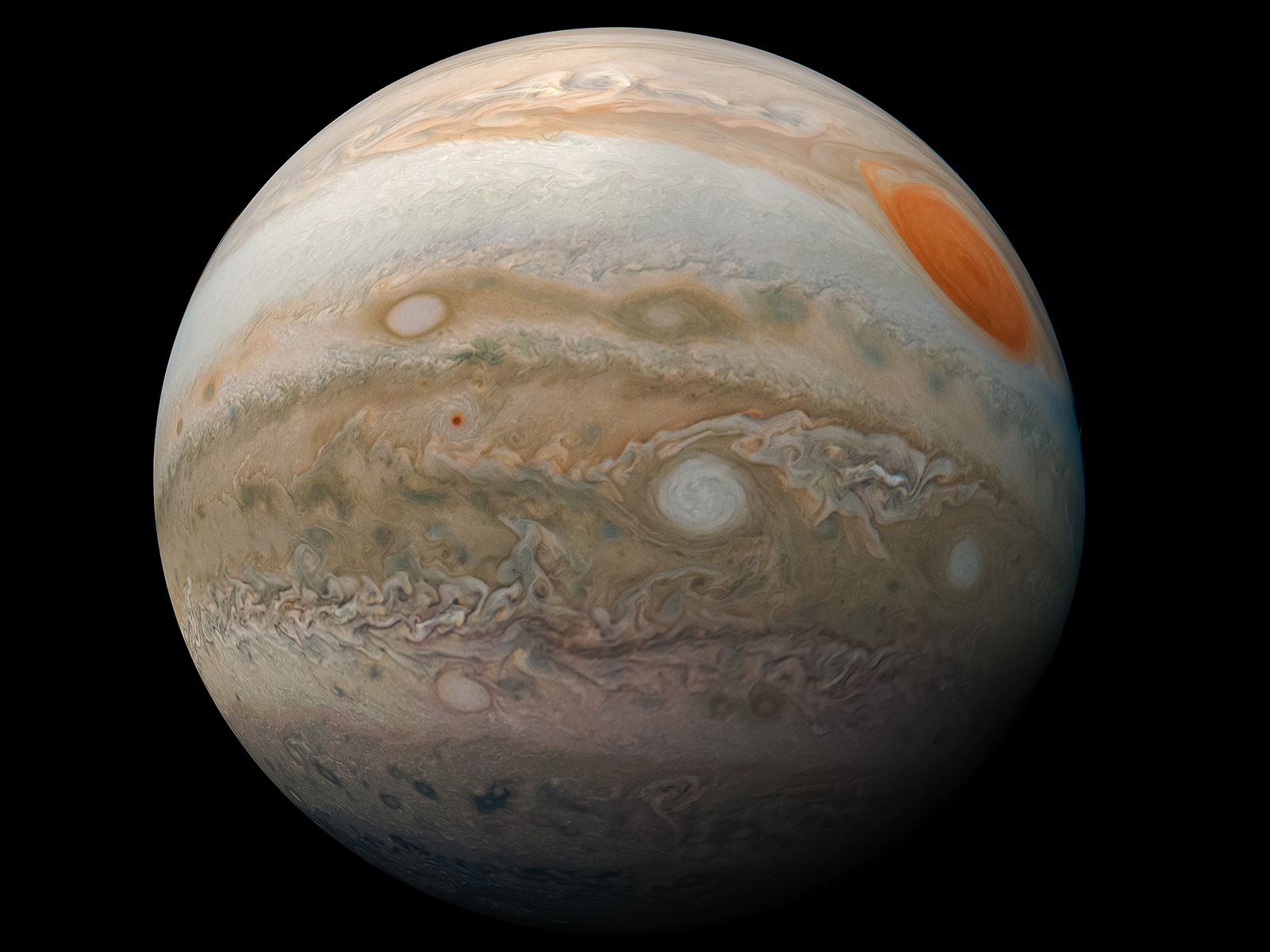
The Juno mission to Jupiter has been extended to September 2025 – or however long the spacecraft can keep operating around Jupiter.
While Juno has so far focused its attention on the giant planet alone, the mission extension will include observations of Jupiter’s rings and large moons, with targeted observations and close flybys planned of the moons Ganymede, Europa, and Io.
This will be the first close flybys of these moons since the Galileo mission in 1995-2003.
Continue reading “With its New Extension, Juno is Going to be Visiting Jupiter’s Moons”Are the Clouds of Jupiter Haunted?
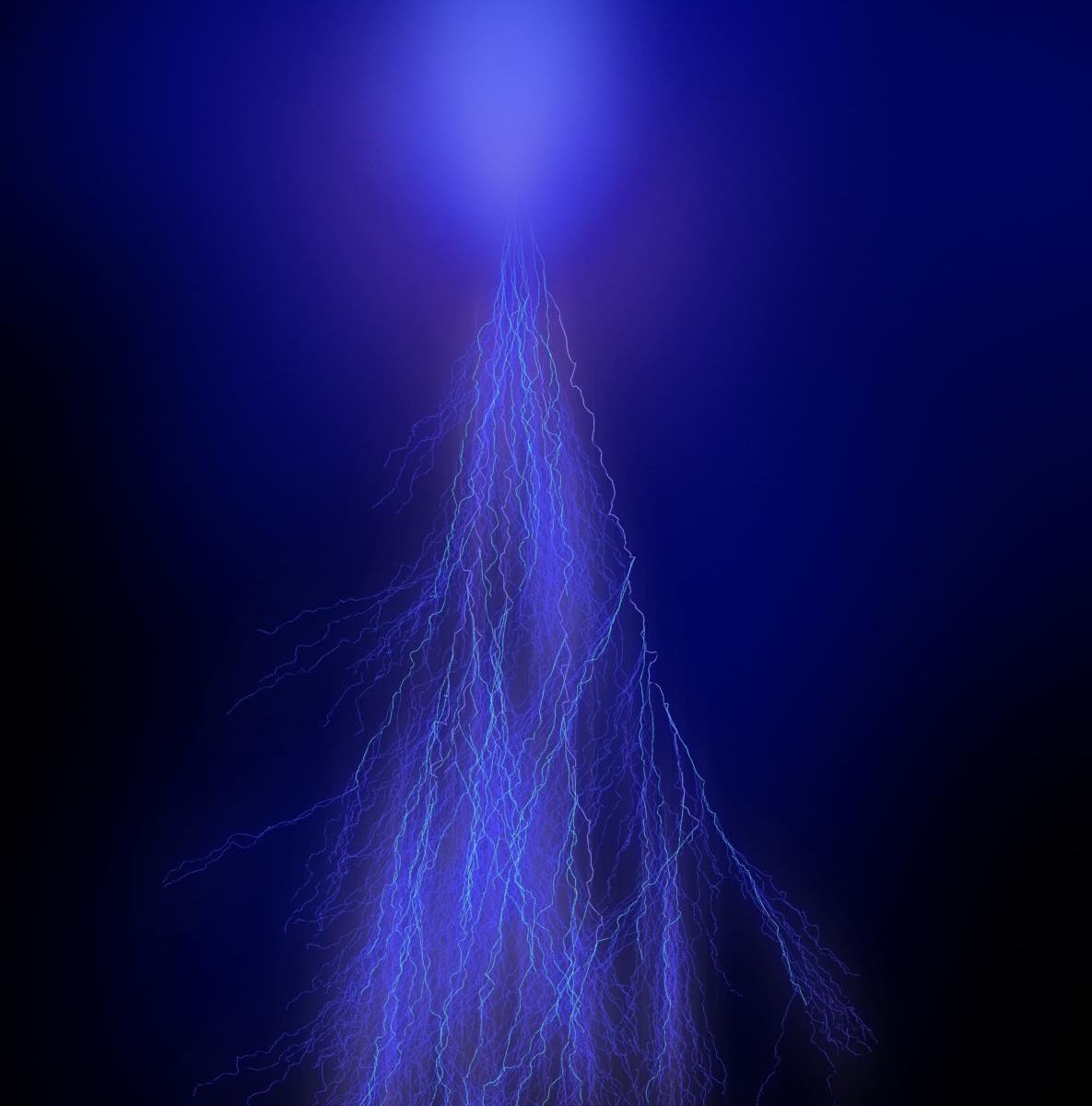
Are spirits amongst the clouds of Jupiter? The answer might be yes! A recent publication in the Journal of Geophysical Research: Planets has identified what appear to be “Sprites” in the Jovian Atmosphere.
In European Folklore, ‘Sprites’ (derived from Latin ‘spiritus’ or spirit) were elemental and ethereal beings visiting Earth. The term is fitting for “lightning sprites”, a natural meteorological phenomenon with many eye-witness testimonies but not captured on camera until 1989. Created by lightning discharges in Earth’s atmosphere, sprites are part of larger family of phenomena called TLE’s, or “Transient Luminous Events”, that last for only fractions of a second.
Continue reading “Are the Clouds of Jupiter Haunted?”Simulation Helps Explain Saturn’s Mysterious Hexagon

A new study of the mysterious hexagon-shaped storm at Saturn’s north pole suggests this phenomenon is actually the result of activity occurring across the entire planet.
Continue reading “Simulation Helps Explain Saturn’s Mysterious Hexagon”See a 360 Degree Juno-Eye View of Jupiter During an Io Eclipse
Yesterday, we posted some incredible photos from the Juno Probe’s 29th flyby of Jupiter. Juno is in a highly elliptical orbit. It buzzes the planet at an altitude of 4,200km and then sweeps out to 8.1 million. Completing this circuit every 53 days, Juno only spends 2 hours within close proximity to Jupiter reducing the probe’s exposure to harmful radiation of high energy particles accelerated by Jupiter’s magnetic field.
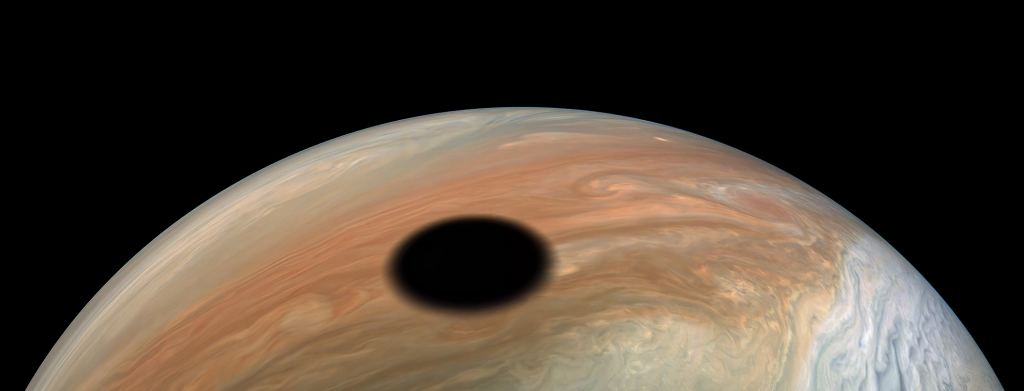
Here’s Jupiter from Juno’s Latest Flyby
Jupiter.
Most massive planet in the solar system – twice that of all the other planets combined. This giant world formed from the same cloud of dust and gas that became our Sun and the rest of the planets. But Jupiter was the first-born of our planetary family. As the first planet, Jupiter’s massive gravitational field likely shaped the rest of the entire solar system. Jupiter could’ve played a role in where all the planets aligned in their orbits around the Sun…or didn’t as the asteroid belt is a vast region which could’ve been occupied by another planet were it not for Jupiter’s gravity. Gas giants like Jupiter can also hurl entire planets out of their solar systems, or themselves spiral into their stars. Saturn’s formation several million years later probably spared Jupiter this fate. Jupiter may also act as a “comet catcher.” Comets and asteroids which could otherwise fall toward the inner solar system and strike the rocky worlds like Earth are captured by Jupiter’s gravitational field instead and ultimately plunge into Jupiter’s clouds. But at other times in Earth’s history, Jupiter may have had the opposite effect, hurling asteroids in our direction – typically a bad thing but may have also resulted in water-rich rocks coming to Earth that led to the blue planet we know of today.
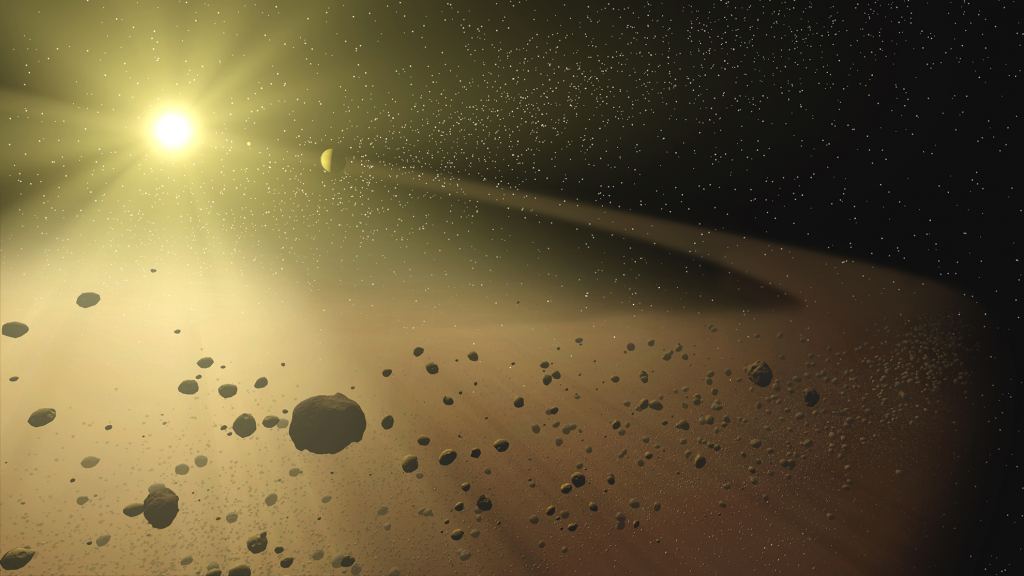
Another Beautiful Image of Jupiter from Juno During a Flyby. Great Work by Gerald Eichstadt and Sean Doran
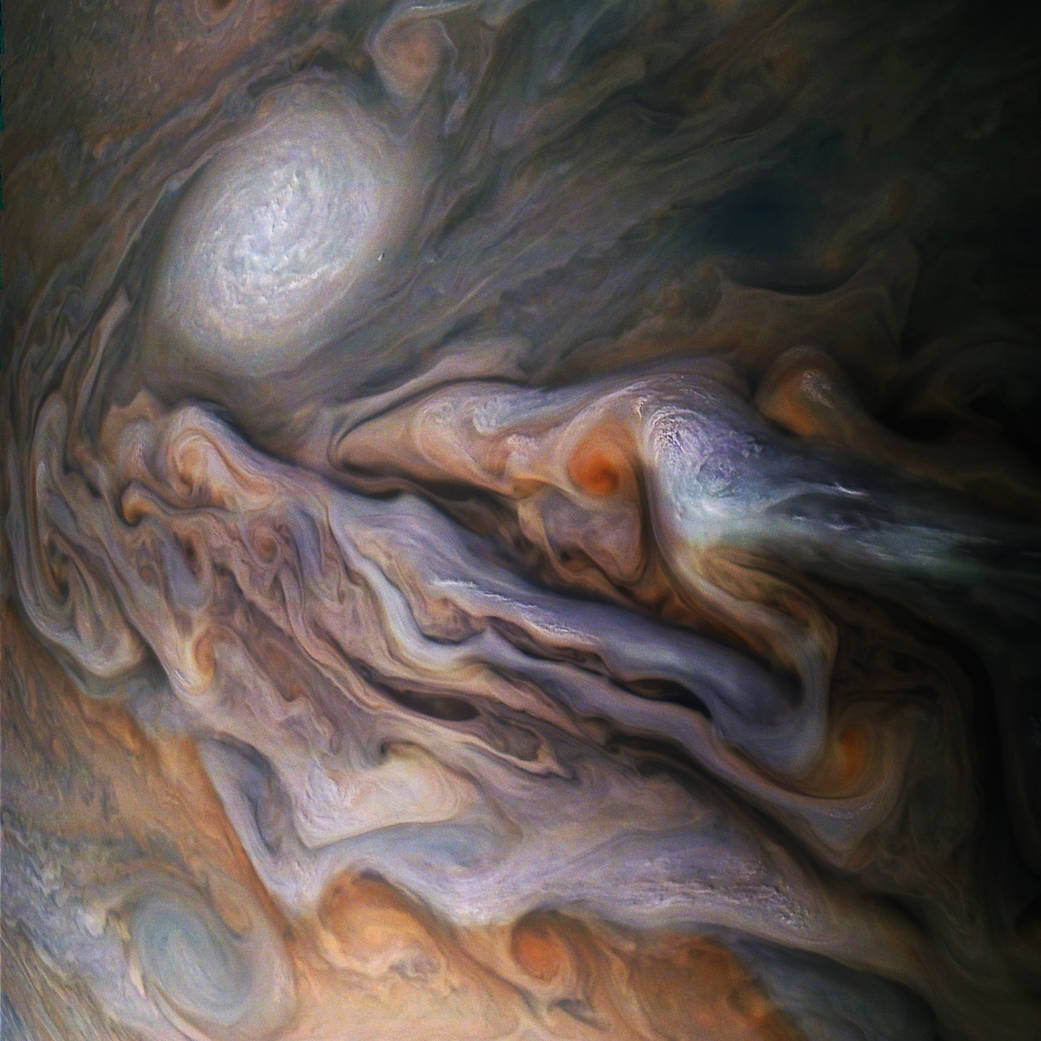
Confucius said, “Everything has beauty, but not everyone sees it.”
When it comes to Jupiter, Gerald Eichstädt and Seán Doran can certainly see it. And lucky for us, they have the skill to bring that beauty to the fore for the rest of us to enjoy.
Continue reading “Another Beautiful Image of Jupiter from Juno During a Flyby. Great Work by Gerald Eichstadt and Sean Doran”The Latest Insanely Beautiful Image of Jupiter Captured by Juno
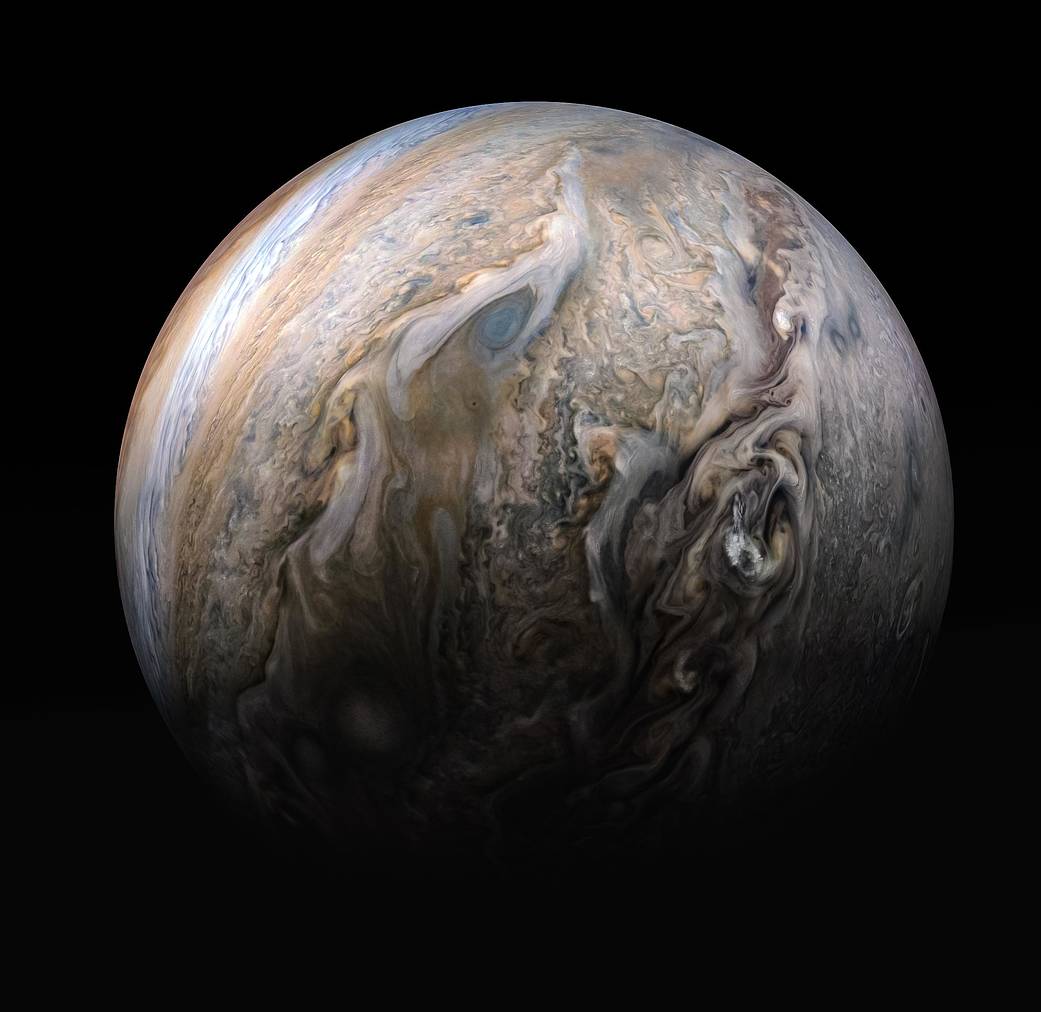
There’s something about Jupiter that mesmerizes those who gaze at it. It’s intricate, dazzling clouds are a visual representation of the laws of nature that’s hard to turn away from. And even though the Juno spacecraft has been at Jupiter for almost three years now, and has delivered thousands of images of the gas giant’s colourful, churning clouds, we can’t seem to satisfy our appetite.
Continue reading “The Latest Insanely Beautiful Image of Jupiter Captured by Juno”Weekly Space Hangout: April 18, 2018: Kevin Gill: Art and Science from Juno and MRO
Hosts:
Fraser Cain (universetoday.com / @fcain)
Dr. Paul M. Sutter (pmsutter.com / @PaulMattSutter)
Dr. Kimberly Cartier (KimberlyCartier.org / @AstroKimCartier )
Dr. Morgan Rehnberg (MorganRehnberg.com / @MorganRehnberg & ChartYourWorld.org)
Special Guests:
Kevin Gill is a software engineer, planetary and climate data wrangler, and a science data visualization artist. Kevin will be discussing his work with Juno and MRO images. Check out his work at his Flickr page: https://www.flickr.com/photos/kevinmgill/ and his tech blog Apoapsys: http://www.wthr.us/ Follow Kevin on Twitter at: https://twitter.com/kevinmgill and Instagram here: https://www.instagram.com/apoapsys/
Announcements:
If you would like to join the Weekly Space Hangout Crew, visit their site here and sign up. They’re a great team who can help you join our online discussions!
We record the Weekly Space Hangout every Wednesday at 5:00 pm Pacific / 8:00 pm Eastern. You can watch us live on Universe Today, or the Weekly Space Hangout YouTube page – Please subscribe!
Io Afire With Volcanoes Under Juno’s Gaze

Volcanic activity on Io was discovered by Voyager 1 imaging scientist Linda Morabito. She spotted a little bump on Io’s limb while analyzing a Voyager image and thought at first it was an undiscovered moon. Moments later she realized that wasn’t possible — it would have been seen by earthbound telescopes long ago. Morabito and the Voyager team soon came to realize they were seeing a volcanic plume rising 190 miles (300 km) off the surface of Io. It was the first time in history that an active volcano had been detected beyond the Earth. For a wonderful account of the discovery, click here.

Today, we know that Io boasts more than 130 active volcanoes with an estimated 400 total, making it the most volcanically active place in the Solar System. Juno used its Jovian Infrared Aurora Mapper (JIRAM) to take spectacular photographs of Io during Perijove 7 last July, when we were all totally absorbed by close up images of Jupiter’s Great Red Spot.
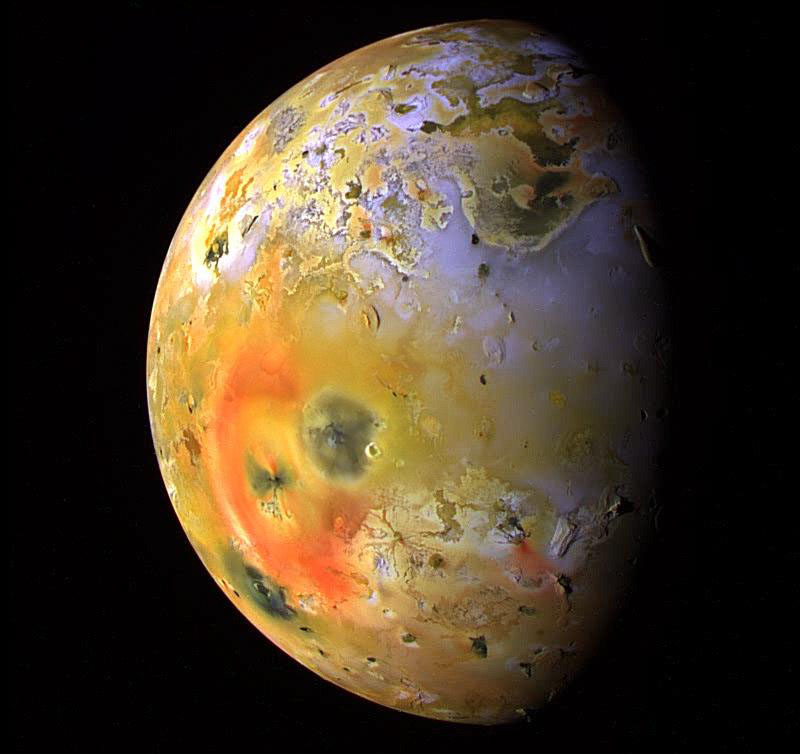
Juno’s Io looks like it’s on fire. Because JIRAM sees in infrared, a form of light we sense as heat, it picked up the signatures of at least 60 hot spots on the little moon on both the sunlight side (right) and the shadowed half. Like all missions to the planets, Juno’s cameras take pictures in black and white through a variety of color filters. The filtered views are later combined later by computers on the ground to create color pictures. Our featured image of Io was created by amateur astronomer and image processor Roman Tkachenko, who stacked raw images from this data set to create the vibrant view.
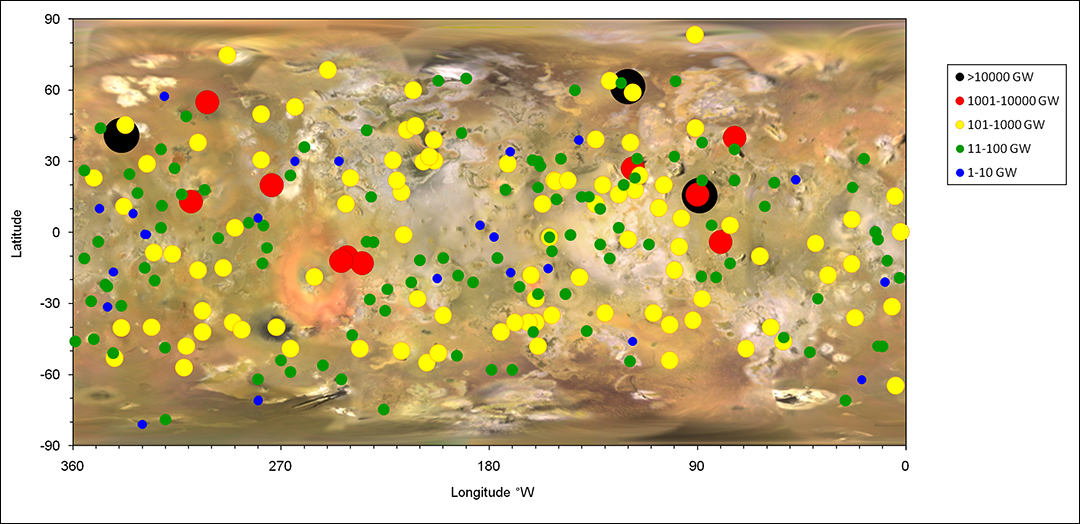
Io’s hotter than heck with erupting volcano temperatures as high as 2,400° F (1,300° C). Most of its lavas are made of basalt, a common type of volcanic rock found on Earth, but some flows consist of sulfur and sulfur dioxide, which paints the scabby landscape in unique colors.
This five-frame sequence taken by NASA’s New Horizons spacecraft on March 1, 2007 captures the giant plume from Io’s Tvashtar volcano.
Located more than 400 million miles from the Sun, how does a little orb only a hundred miles larger than our Moon get so hot? Europa and Ganymede are partly to blame. They tug on Io, causing it to revolve around Jupiter in an eccentric orbit that alternates between close and far. Jupiter’s powerful gravity tugs harder on the moon when its closest and less so when it’s farther away. The “tug and release”creates friction inside the satellite, heating and melting its interior. Io releases the pent up heat in the form of volcanoes, hot spots and massive lava flows.
Always expect big surprises from small things.

